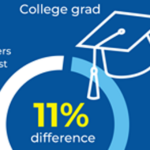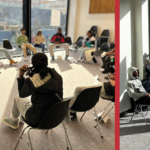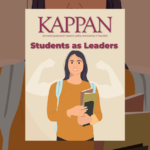
ESSA EXTRAVAGANZA

Perhaps the most-shared piece of the week was Emma Brown’s Washington Post overview of the challenges of giving states more control over intervening in struggling schools under ESSA. It’s not entirely true that NCLB “dictated” fixes for troubled schools, as the promo copy suggests, but it certainly focused on a specific set of options. And there’s controversy over whether the turnaround program worked. But now states are in the driver’s seat, and that could be a great or awful thing. (See more about Brown in “People, Places, & Things.)
In other ESSA news produced this week, the Post also reported in Virginia’s new plan to hold struggling schools accountable under ESSA. EdWeek updated us on the USDE’s approval of plans for Nevada, New Jersey, and New Mexico, and the controversy over Florida’s plan.
A sampling of other ESSA coverage:
Chalkbeat: Next year, Indiana high schoolers will have to meet more “college or career readiness” requirements to graduate https://t.co/z6saA5Hn9L
MinnPost: Minnesota revamps the way it identifies low-performing schools, sticks with support model https://t.co/Ez7rYRAZPU
But this week seems pretty unusual. For much more on mainstream ESSA coverage see “AWOL ON ESSA” (below).
HONORABLE MENTIONS
NYT: Deep in Trump country, educators are pushing forward to revamp vocational education – without Washington https://t.co/51kmfv7Ofg
Politico NY: How New York stopped being the nation’s education reform capital http://ow.ly/Co6Y30emA0R
Chalkbeat: Critics say NYC’s mayor isn’t doing enough to integrate schools. Here’s why he might be dragging his feet. https://t.co/iFEsx7bm9Q
AL: Immigration transformed this rural Alabama town; the principal fought to keep the school together https://t.co/jwDcNJT1G6
NPR: The Public Schools Near Betsy DeVos’ Hometown Are Doing Great http://ow.ly/3hUL30emACH
Chalkbeat CO: Denver teachers union, members of progressive wing diverge on key school board races https://t.co/wn46ci0vVb
NPR: This School District [Pasadena] Asked Real-Estate Agents To Help Rekindle Its Reputation https://t.co/12AanB8vEY
The American Prospect: Under Trump, Liberals Rediscover School Segregation http://nzzl.us/tZr5H58
FROM THE GRADE
AWOL ON ESSA

“Where’s the beef?”
This week’s column from The Grade focused on the lackluster and often superficialmainstream coverage of ESSA implementation so far in 2017.
Despite this week’s extravaganza, it seems like national outlets (with the exception of the Post) have been distracted from what’s going on with ESSA, and state and local outlets have been struggling to find ways to make the story comprehensible and compelling to non-education readers – at what many would argue is a critical time. It’s not quite a Common Core 2.0 situation, but public awareness of what’s in the state plans and what happens next has got to be awfully low.
Ask someone on the street “What’s ESSA?” and you’re just as likely to be told it’s a splinter group of ISIS, a new anti-depression drug, or an EDM/Country Music hybrid as a nearly two year-old federal education law. There are many factors – disarray at the USDE, the DeVos distraction (discussed below), the density of the state plans, and the dearth of education reporters experienced enough to remember NCLB (2002) and IASA before it.
DEVOS DOES WHAT?

Much was made of DeVos’s sit-down interview with the AP’s Maria Danilova and Carole Feldman. But I’m not exactly sure why. She’d talked to the New York Times before, according to Erica Green, and answered some reporters’ questions during a DC school event earlier this summer. She’d taken questions on Title IX Q-and-A session not too long ago.
As you can see from the AP writeup, DeVos didn’t say anything all that interesting, far as we know so far. The most notable thing I found in the Saturday follow-up story was a description of DeVos’s office (with her razor-thin Senate confirmation vote framed on the wall). No word so far on whether we’ll ever get to see a transcript or tape.
In case it’s not obvious yet, there are at least two big reasons to consider whether or not to write another Betsy DeVos story going into the fall:
The first is that, as noted in this week’s column (see below), you’re taking attention away from coverage of things that might be more important to vulnerable communities (like ESSA). The second is that you might find yourself accused of turning DeVos into what Franklin Foer describes as a “Cecil the Lion” story.
Writing about his experience at The New Republic in the Chartbeat era, Foer notes that “once a story grabs attention, the media write about the topic with repetitive fury, milking the subject for clicks until the public loses interest.” Sound familiar?
Even if it’s not done for clicks and shares, the DeVos coverage has become obvious and disproportionate. The media clearly don’t like DeVos. On their own or because of the media fascination, people don’t much like her, either. But at the same time, reporters and editors know that pretty much anything they write about her will garner a lot of attention – especially (and perhaps exclusively) if it’s worrying or (even better) outrageous. But it’s one thing for advocates to rail against her and her policies. That’s their job. It’s another thing for the media to go along for the ride. And I’m not just writing that for clicks.
PUBLIC TRUST & THE NYT
The NYT defended its affirmative action story last week, even though there’s still no concrete evidence that the focus is on pushing back against “antiwhite bias.” DC-based higher education reporter Jamaal Abdul-Alim pointed out that he and others wrote reaction stories based on the NYT story only to find out too late that there was no there there (yet). Wrote Abdul-Alim: “Our industry can ill afford that amid allegations of ‘fake news.’”
Meantime, the Washington Post’s Erik Wemple noted that the Times made another, much bigger screw-up on its climate change story – and corrected itself too timidly. Argh.
PEOPLE, PLACES, & THINGS
BROWN, OUT

Word arrived on Friday that Emma Brown, the Washington Post’s national education reporter, is leaving the beat.
Brown tweeted: “I love covering education, I care about it — & I will miss it. But I’m thrilled to be joining the Post’s new quick-turn investigative team.” Colleagues and admirers responded en masse. You can read the official announcement here.
Brown’s most memorable story for me is the 2012 piece she did about the teacher dismissal process in Fairfax, Va: Teacher tenure: a Fairfax schools firing case. As you may recall, Brown and I did a Q-and-A (Meet The Reporter Behind The Violet Nichols Tenure Story) about how she got the story and the challenges of writing about such a complicated and little-understood process.
She’s been writing about education since 2011, and she’s been covering the national beat pretty much solo since Lindsey Layton left last year. I and others have had issues with some of her stories (see here, here). But over all she’s done a stalwart job in an extremely challenging environment. No replacement has been named yet.
TIDBITS
Education reporter #1 Nikole Hannah-Jones and several others pulled out of a panel at #NABJ17, taking place in New Orleans. Read all about it at – yes! – Page Six. Any other education types at the event? My Twitter feed has been crickets.
The Miami Herald’s Kyra Gurney has an eye-opening story about how some Miami-Dade cities are starting there own “municipal charters” and recruiting parents to pay big bucks for guaranteed spots at highly coveted magnet school expansions, thereby exacerbating segregation and inequality. Pretty outrageous – I’ve never heard of this before.
Kudos to the Hechinger Report for making the weekly “Local Matters” newsletter featuring great local coverage. If you’re not already signed up, you probably should.
There’s an EWA conference Sept. 10-11 in Anaheim, Calif., for two days of programming entirely in Spanish tailored to meet the needs of busy journalists in the Spanish language media. Sign-up deadline is August 23rd.
KICKERS

First Walmart apologized for sign marketing guns as back-to-school items. Now the company says we were all being pranked.
We’re going to see and share a lot of solar eclipse stories in the next week or so. The Washington Post explores why some schools are closing and others are staying open on eclipse day (Monday 8/21). EdSource looks at how teachers are using the event to teach science. (Given past experience, some kids may not get to see it. “We were kept inside during recess in Casper, Wyoming during the 1979 total solar eclipse,” writes Audrey Watters.) A cool animation from Vox lets you find out what time the eclipse is coming your wayand what (approximately) it’ll look like.
__
Here’s the archive of past newsletters, plus a handy-dandy signup form if you’re not already following or are sick of passing it on to colleagues.
ABOUT THE AUTHOR

Alexander Russo
Alexander Russo is founder and editor of The Grade, an award-winning effort to help improve media coverage of education issues. He’s also a Spencer Education Journalism Fellowship winner and a book author. You can reach him at @alexanderrusso.
Visit their website at: https://the-grade.org/












